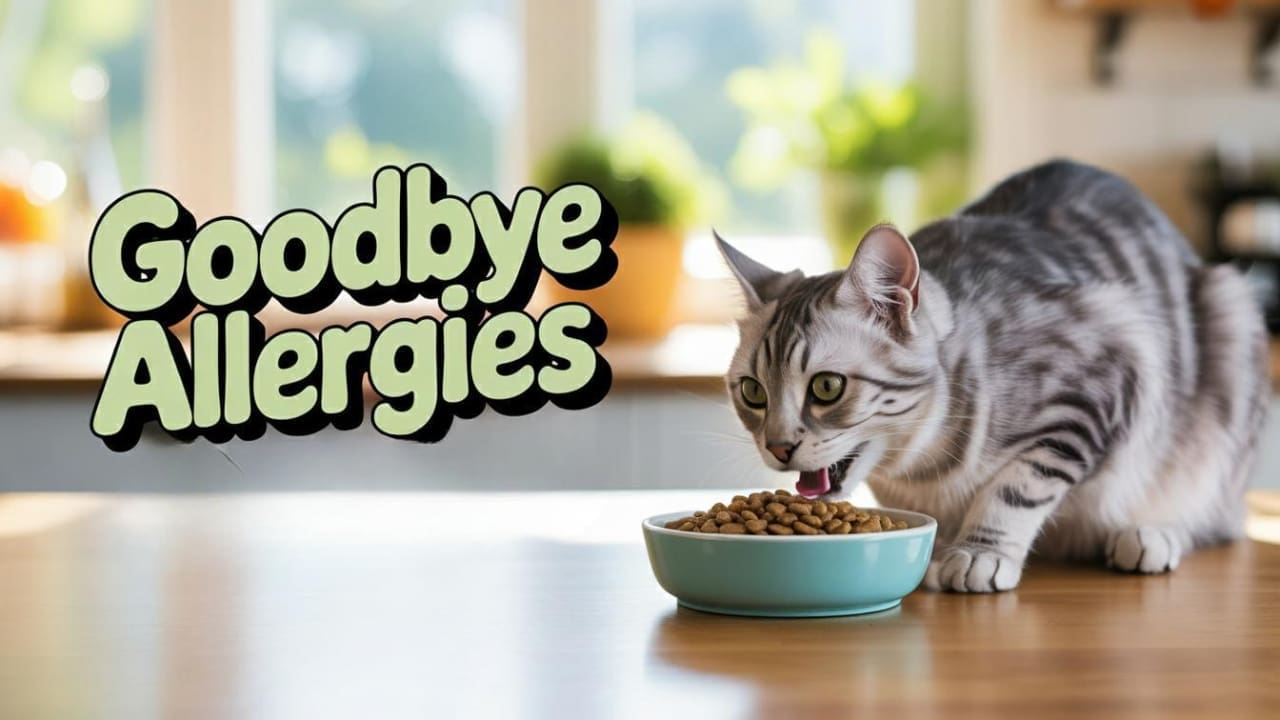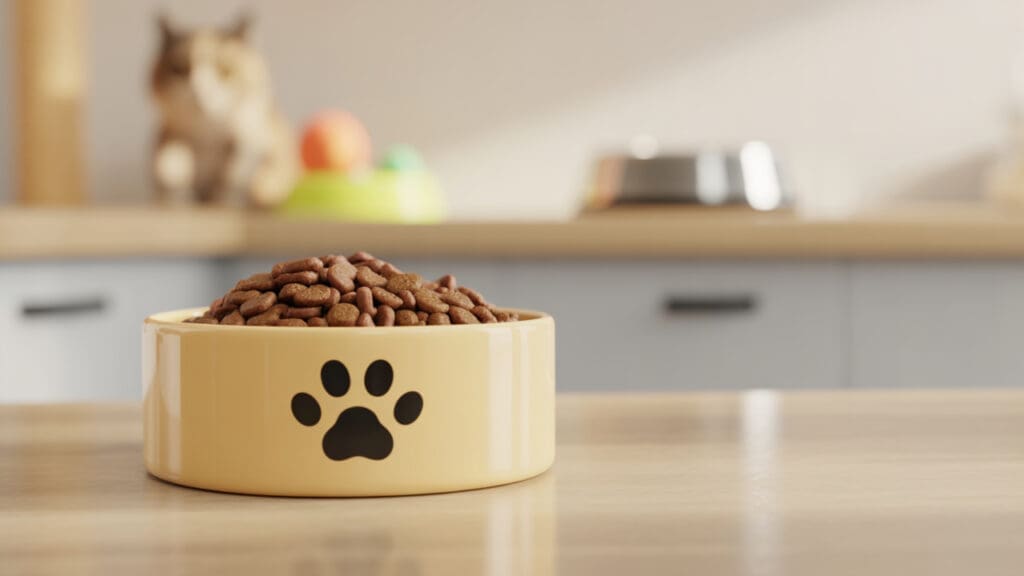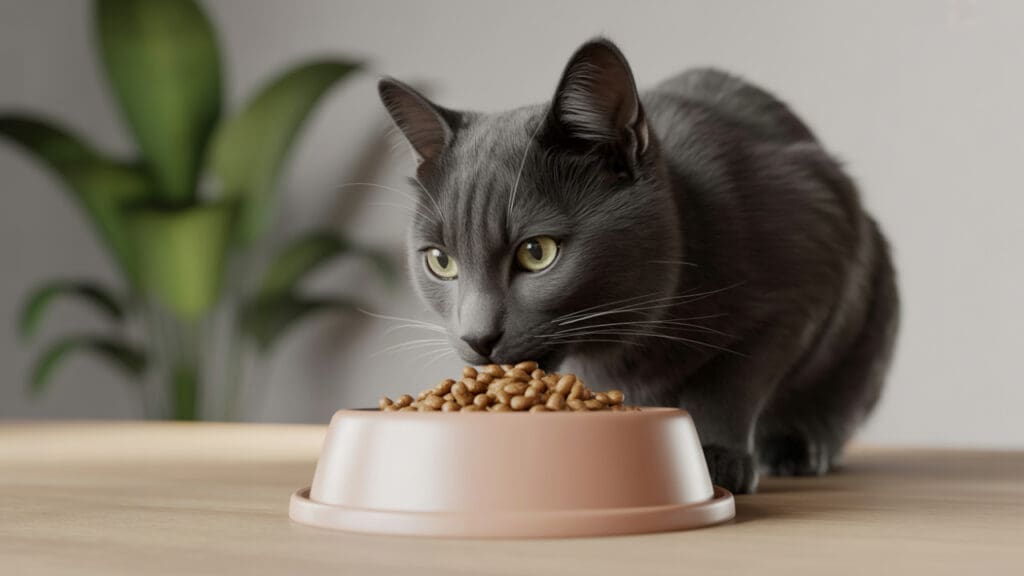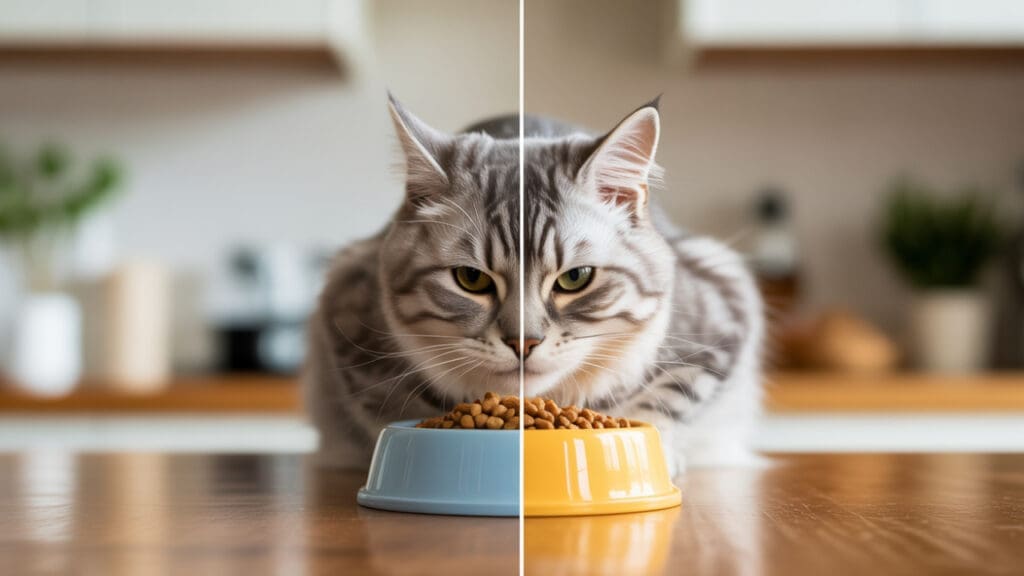
Newsletter Subscribe
Enter your email address below and subscribe to our newsletter

Enter your email address below and subscribe to our newsletter

Perhaps cuddling your cat is what you live for. But what follows can be quite unbearable for you-sneezing, itchy eyes, or even asthma. You’re allergic to your feline friend.
Now, know that pet allergies (especially those triggered by the Fel d 1 protein) are quite common. In fact, they affect millions of households.
Fortunately for you, you can feed your feline companion certain cat food to reduce allergens (substances that can trigger an allergic reaction). Vet-endorsed diets using egg-based IgY antibodies, for example, can help reduce Fel d 1 levels. However, this is only when you make sure to help your cat stick to the diet consistently for weeks or even months.
Many of us misinterpret the term “hypoallergenic foods.” These do not help with your (the human’s) allergies. They are meant, instead, for cats that might be sensitive to certain food items. Allergen-reducing foods, on the other hand, are those meant to reduce the allergens your cat produces that affect your allergies.
Some of us like to blend allergen-reducing formulas with other cat treats or table scraps. This might seem like a good way to cut costs or get your feline partner to eat the food. But understand that it also undermines the food’s effectiveness.
Let’s learn about the exact feeding strategies vets recommend in this article. Other than that, we will also expose some common misconceptions and break down what kind of results you can expect from feeding your cat allergen-reducing food.

It can be frustrating to start sneezing and struggling with those itchy eyes of yours after hugging your cat. A lot of us may think that this is an allergic reaction to cat fur. But you may be surprised that the culprit might not even be something you have heard of.
The real offender is a protein called Fel d 1. It can be found in your cat’s saliva, skin, and sebaceous glands. It is a microscopic protein that triggers allergies in us humans. And that’s why you need the help of the right cat food to reduce allergens.
Let’s take a look at how Fel d 1 affects you exactly. For starters, this protein is lightweight and sticky. It gets deposited on your cat’s fur and skin when they groom (lick) themselves.
Your cat then sheds. And those tiny protein particles that are stuck to their hair and dander hitch a ride, becoming airborne. You, then, turn out to be the one to inhale them. Now, Fel d 1 is one of the smallest allergens known. That means it can stay in the air and cling to surfaces for quite some time.
Every cat produces Fel d 1. Some may produce less because of genetics, but there is not a single feline that is truly free of allergens. But lucky for you, you can find cat food to reduce allergens that can help with your situation. And it does not make any changes to your feline partner’s grooming habits.
If you are one of those who think that vacuuming every day can solve the problem, you might be disappointed to hear this. Vacuuming is a surface-level fix. If you want to reduce allergens, you need to target them from a biological standpoint. And food is one of the ways to go about this.

What your cat eats can indeed affect your human allergies. They target the problem at a biological level. Let’s take a look at how they work.
When your feline friend eats specially formulated cat food allergen reducer, the ingredients interact with the Fel d 1 protein. The egg-derived IgY antibodies, for example, can neutralize Fel d 1 at the source. These antibodies bind to the protein in your cat’s mouth and saliva, neutralizing it before your cat gets the chance to transfer it to their fur.
This approach helps reduce the allergenic particles released into the environment from your cat’s grooming and shedding.
Veterinary dermatologists mention that if we consistently feed our cats these formulas, there is a chance that the effort could help reduce environmental allergens by up to 47% over 3 weeks. Improvement is supposed to be a gradual process.
Allergy reducing cat food can be more expensive than standard kibble. You are looking at an average of $30 to $50 per bag. But we would say it is quite a worthwhile trade-off. After all, the allergy medications, air filters, and constant cleaning could cost you more in the long term.
That said, you should understand that this is not a cure. It’s a management strategy. It’s meant to reduce the allergens, not eliminate them.

Egg-derived IgY antibodies can be thought of as microscopic “Pac-Man” molecules at work inside your cat’s mouth. When your cat eats allergen-reducing food, these antibodies stay active in the saliva. As the cat grooms, the Fel d 1 allergen protein (the “ghosts”) comes into contact with the IgY “Pac-Man.” The antibodies bind to Fel d 1, neutralizing it and creating a larger complex that is too heavy to become airborne. In this way, the protein is deactivated before it can stick to fur or spread into the environment.
The sequence is simple:
[Cat eats food] → [IgY antibodies in saliva] → [Cat grooms] → [IgY binds Fel d 1] → [Neutralized complex is swallowed].
Scientific studies confirm that to block allergic reactions, multiple epitopes on Fel d 1 must be bound. This prevents the allergen from interacting with human IgE antibodies, stopping the cascade that leads to allergy symptoms.
It’s no shame. Many of us are confused as to which ingredients actually help reduce allergens. You’ll need to look for specific components in cat food allergy reducer formulas that can help with the root problem.
As mentioned, the star player is egg-based proteins containing IgY antibodies. They are natural immunoglobulins that can bind to Fel d 1. These antibodies are safe for your cat, and they help reduce the active allergens in their saliva.
Next, some advanced formulations include omega-3 and omega-6 fatty acids. These ingredients promote skin health and reduce excess dander. Danders are the tiny flakes that usually carry allergens through the air. This means reducing dander helps lower the chances of you getting exposed to allergens. Combined with high-quality animal proteins, these diets can benefit both your cat’s coat condition and digestion.
Many of us think that “grain-free” or “organic” foods help. Now, these foods could indeed benefit your feline companion’s general wellness in some ways. However, they do little or nothing to your allergies, as they most likely do not neutralize the Fel d 1 protein.
Veterinarians say that we will need to pay attention to ingredient consistency and scientific formulation. Try to ignore marketing claims and do your research. Look for vet-recommended brands that list egg or egg-derived proteins clearly. You might also want to steer clear of foods with lots of artificial preservatives or dyes.
This is most likely where most of us start to slip. Many people think that “hypoallergenic food” and “allergen-reducing cat food” are the same thing. They both sound like solutions to allergy problems. But they target two completely different issues.
Let’s start with hypoallergenic cat food. These are foods made for cats that have food sensitivities or intolerances. It has nothing to do with us humans. Hypoallergenic diets usually contain limited ingredients and hydrolyzed proteins-proteins broken into smaller pieces that your cat’s immune system is less likely to recognize. They are meant to reduce the risk of triggering a reaction in your cat.
On the other hand, cat allergen reducing food is meant to help reduce allergens released by your feline companion. These are the allergens that affect us humans. Such diets are often enriched with egg-based antibodies that neutralize Fel d 1, which is the protein that causes your allergies. They target the issue right at the source, typically your cat’s saliva.
As for the price, you can expect to spend about $60 or more per bag for hypoallergenic foods. You’ll most likely need a vet prescription for buying these. Allergen-reducing foods, however, are often more affordable and easier to source. You are looking at about $30 or more per bag. And they are often available in pet stores and online.
So, make sure you understand what you’re treating. Is it your allergic response or your cat’s sensitivities? You wouldn’t want to waste your money on products that do not help with the situation.
Now, you might have gone out of your way to purchase the cat food to decrease allergies. But remember that it’s no magic potion, and it will take time before you see some results. More often than not, success depends on your strategy, patience, and proper implementation.
First, make sure that you’re consistent. Vet nutritionists stress that we should exclusively feed our cat the cat food allergen reducer we have chosen in order to see if the formula works. You shouldn’t be mixing it with regular kibble. You also shouldn’t provide your cat with treats that contain unapproved proteins. And certainly, no shared scraps from the dining table are allowed as well.
Remember, allergen levels don’t drop overnight. Several clinical trials say that it could take over 3 to 6 weeks of uninterrupted feeding to see a drop in Fel d 1 output. So, don’t feel frustrated, thinking that the diet doesn’t work. You need patience to commit to the feeding plan. Also, track the environmental symptoms over time.
You can expect to spend around $30-$45 on average for a 6–7 lb bag of allergen-reducing formula. This range, of course, can differ slightly from brand to brand. They are not the cheapest thing you can find on the shelf. But they are likely more affordable than all the allergy shots, air purifiers, or antihistamines you might need, otherwise. Plus, these foods usually do not need a prescription either.
Lastly, if you have many cats in your house, vets recommend feeding them all the same formula. Fel d 1 is pervasive, meaning it spreads easily between cats and around the house. So if you’re allergic to even one cat, it’s best to assume you will, too, to the others.
Weeks 1–2: Transition Phase
Weeks 3–6: Building Phase
Weeks 7–12: Effectiveness Phase
Maybe you’re one step away from switching your cat’s food. But again, remember not to expect an instant cure. You might have also heard a few other things regarding this topic. Let’s see if they are just myths or truths.
One of the most widespread misconceptions you may hear is that cat food reduces allergens the same way allergy medications work for us humans. No, cat allergen reducing food targets the source of the problem, which is Fel d 1 in your cat’s saliva and dander. It’s not a medication. It’s not even a complete cure. It’s a long-term management tool for cutting down allergens.
The next one is that people confuse hypoallergenic cat food with allergen-reducing formulas. Again, hypoallergenic diets help with your cat’s own food allergies. But allergy reducing cat food helps with your human allergies, instead. Check out the earlier section for more information.
Another common misconception is thinking that you can mix old and new foods during the transition. You should know that vets do not recommend we blend allergen-reducing food with standard kibble. It dilutes the active ingredients, making the formula less effective or even ineffective. Try to make sure that the transition is complete and consistent.
If you’re thinking of switching to an allergen-reducing cat food soon, know that timing and expert guidance matter. There are times when you’ll need to talk to your vet in order to maximize the result of your initiative.
So, when should you reach out? First, if you notice that someone in your house is going through allergic symptoms even though you’ve tried some basic allergen control methods, it’s time to talk to your vet. These symptoms could be sneezing, wheezing, hives, or even asthma.
Your vet can then help you assess whether your cat is a good candidate for a cat food allergy reducer. Let them rule out any underlying conditions your feline partner may have. You don’t want them to interfere with the new diet, after all.
If you already know that your cat has health issues, then professional input is non-negotiable. Some of these common problems include chronic kidney disease, sensitive digestion, or a history of food intolerances. Not all cat food allergy reducer formulas are suitable for every health profile.
Don’t wait too long to consult your vet. If you’ve already tried multiple foods and the results were no good, then you might be just wasting more money. Veterinary nutritionists say that the earlier you start working with professionals, the smoother the transition will be. Plus, there’s less trial and error needed.
The cost of visiting your vet may set you back by about $50 to $100. But we’d say that it’s quite the smart investment to help make your environment cleaner. And this can possibly save you hundreds of dollars from having to spend on other less effective products.
You probably still have a number of questions unanswered regarding these cat allergen reducing foods. Let’s take a look at some science-driven and most frequently asked questions surrounding this breakthrough feeding strategy.
The best thing you can do is to look for cat food allergy reducer formulas that include egg-based antibodies (IgY). These antibodies bind to the Fel d 1 protein in your cat’s saliva. As a result, they help reduce the protein’s allergenic effect when your cat grooms and sheds.
Yes, but you’ll need to remember that consistency is very important. If you feed your cat the chosen food consistently and exclusively for more than 3–6 weeks, you should start seeing (have seen) the difference.
You need to start with a diet. Then, support it with lifestyle. You can try using HEPA filters and vacuum more often. Also, you can bathe your cat with pet-safe wipes. That said, no other solution tackles the issue from inside your cat like allergen-reducing food.
It’s not recommended. The ingredient you’re looking for in allergen-reducing food is processed IgY antibodies, not whole eggs. Your cat may face issues with digestion if you feed them raw or cooked eggs. They also don’t work well in lowering allergen production.
No. Allergen-reducing food is meant to reduce the allergens your cat produces. So, it ultimately benefits us humans. Hypoallergenic food is meant to reduce food reactions in your cat. Thus, it’s beneficial for your cat, not you
Some of the top vet-recommended options include Hill’s z/d, Royal Canin Hydrolyzed Protein, and Purina Pro Plan HA. You’ll need to talk to your vet and see which is best for your cat. Each allergy case needs to be treated differently.
All cats produce something called Fel d 1. It’s a protein secreted in saliva and skin. And when your cat grooms or licks themself, the protein spreads to their fur. It then becomes airborne via dander and triggers your allergic reactions.
You should expect to see results within 3 to 6 weeks. It’s a gradual process, not an instant fix. Success will also depend on whether you’re feeding the correct amount and if there’s any interruption.
Yes. Reducing Fel d 1 at the source can ultimately help reduce the number of allergens becoming airborne. You can expect to experience less sneezing and fewer rashes. The air quality should improve as well.
Fel d 1 is the primary allergen in your cat. So, lowering the production leads to fewer chances of you getting exposed to it. And food is one of the most effective and sustainable ways to help you manage this.
Remember, to reduce allergens, you’ll need to target the problem where it starts. And that points to your cat’s saliva and dander. So, choose a targeted cat food to reduce allergens. Focus on finding one with egg-based IgY antibodies, and be consistent with your feeding.
You should now know what to avoid so that you won’t make costly mistakes. The main thing is not to confuse hypoallergenic diets with allergen-reducing ones. You don’t want to blame the lack of results on the wrong use of products.
Continue your attempt and be patient. Time will prove that you’ve made the right move. Your days of having fewer allergy flare-ups and better air quality may be closer than you think.
Again, you’re not just buying food. You’re making a long-term investment so that you can have a healthy and happy home, while cuddling your cat companion without any worries.
Does allergen-reducing cat food work for your cat? Tell us about your experience in the comments down below!